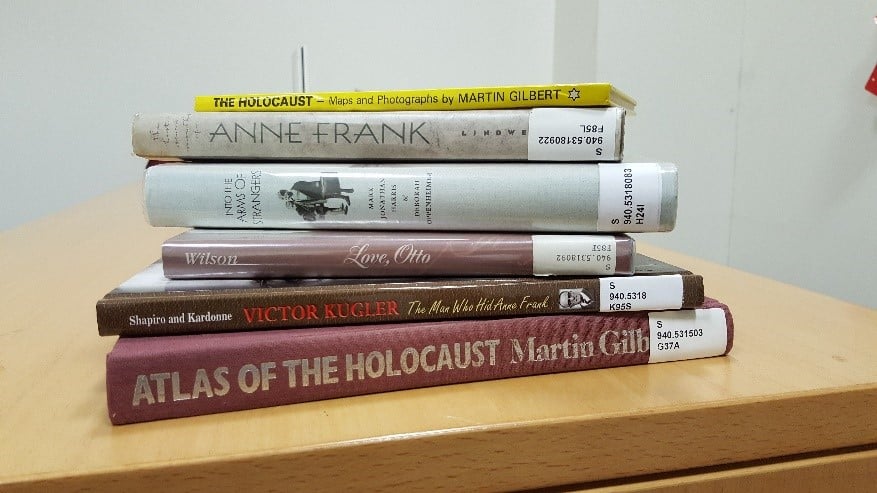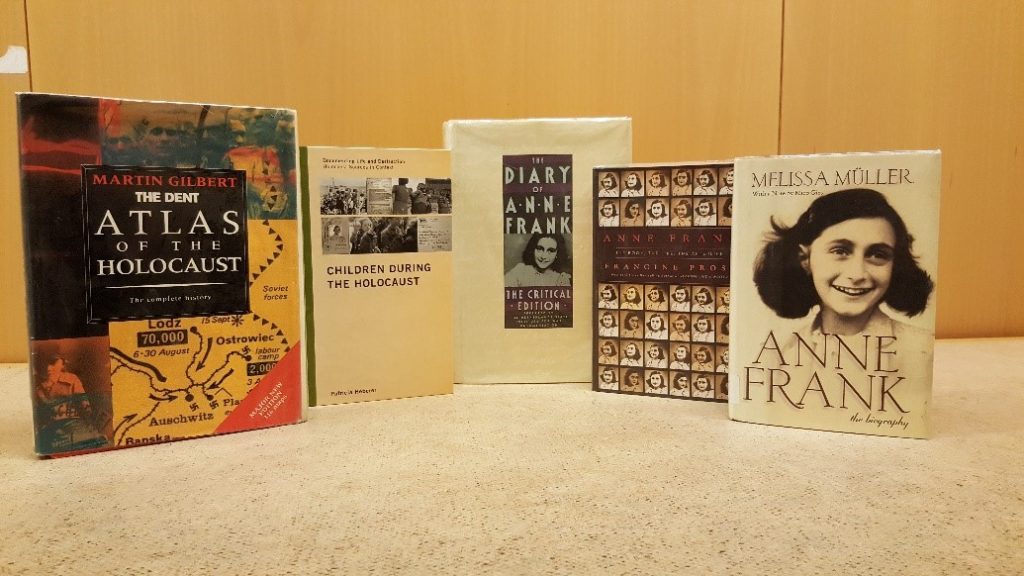
Anne Frank. By Unknown photographer. Source.
This year marks 70 years since the publication of Anne Frank’s diary. It was first published in Dutch as Het Achterhuis (The Annex), and later appeared in English as The Diary of a young girl. It went on to sell more than 30 million copies, and has been translated into nearly 70 languages.
Anne, through her diary, has become an icon of the Holocaust, during which 6 million Jews were killed in World War II. We read the thoughts and feelings of a young girl, only starting her transformation to a young woman, reflecting on her walled environment. Many thousands of children have read her words, placing themselves into her life, understanding, perhaps, the real impact of war and terror in a much more visceral way than they otherwise may have.
Anne was born on 12 June, 1929, in the German city of Frankfurt am Main. She had an older sister, Margot, and parents, Otto and Edith. Trying to escape the political and economic situation in Germany, the family moved to the Netherlands, which was seen as a potential safe place.
However, in May 1940, the Germans invade the Netherlands and start imposing their regime of anti-Jewish regulations. In July 1942 the Frank family went into hiding in the rear annex of Otto’s firm, along with 4 other people. The entrance was concealed behind a bookcase.
Just weeks before this, on Anne’s 13th birthday, she was given a diary. While in hiding, Anne wrote about her life, her family and friends, and her hopes and dreams. Addressing her diary as “Dear Kitty”, we hear about her tensions with her mother; her concerns on hearing the terrifying news from the outer world; and yet her dreams of becoming a published writer. (Apart from the diary, Anne also wrote short stories, and other pieces. She also went back to edit her earlier writings in the diary).
“Writing in a diary is a really strange experience for someone like me. Not only because I’ve never written anything before, but also because it seems to me that later on neither I nor anyone else will be interested in the musings of a thirteen-year old school girl. Oh well, it doesn’t matter. I feel like writing.”
“How wonderful it is that nobody need wait a single moment before starting to improve the world.”
“It’s difficult in times like these: ideals, dreams and cherished hopes rise within us, only to be crushed by grim reality. It’s a wonder I haven’t abandoned all my ideals, they seem so absurd and impractical. Yet I cling to them because I still believe, in spite of everything, that people are truly good at heart.”

Facsimile of Anne’s diary. Source.
The group lived in hiding till August 1944, when they were discovered and arrested. The family were eventually sent to Auschwitz. Margot and Anne ended up in Bergen-Belsen. Both girls died, Anne of typhus in 1945.
Otto was the only survivor of the family. When he eventually went back to the Netherlands he was presented with Anne’s diary, which had been kept safe by Miep Gies, one of four of Otto’s employees who had helped to keep the annex, and its occupants, hidden.
Otto eventually managed to get the diary published, and seventy years on there are now many books, thousands of articles about Anne and her experience and writings, as well as films and plays. See a select bibliography at the United States Holocaust Memorial Museum.
State Library Victoria has several editions and versions of the Diary, and many related works.

A sample of our books related to Anne Frank and the Holocaust.
The Frank’s hiding place still exists now, having been preserved by the Anne Frank Foundation. You can visit Anne Frank House, in person, in Amsterdam, and via a wonderful website. You can also visit an exhibition at the United States Holocaust Memorial Museum entitled Anne Frank: the writer. Both of these sites will provide a multi-dimensional door into the world of Anne.
We have extensive holdings on the Holocaust, in particular the Raoul Wallenberg Holocaust Collection. This week of Anne’s birthday, we will be featuring a small display of books in our Information Centre, but the books are always available for viewing.

Melbourne is home to the largest per capita number of Holocaust survivors outside the state of Israel, and as a legal deposit library we also have a number of survivors’ stories and photographs, providing an uplifting, but poignant bookend to this anniversary remembering Anne.
More to explore


So glad these facts and memories survive and are being kept alive by articles such as Rebekah’s. The SLV display should be worth a visit.
Such a beautiful and important building for our State. Not only the building but also what is obtainable for all of us to use.
From working many years in this field I can only say that the present display is well worth looking at and also we should realise what we have available for all the community free.It is also a beautiful building both inside and out.